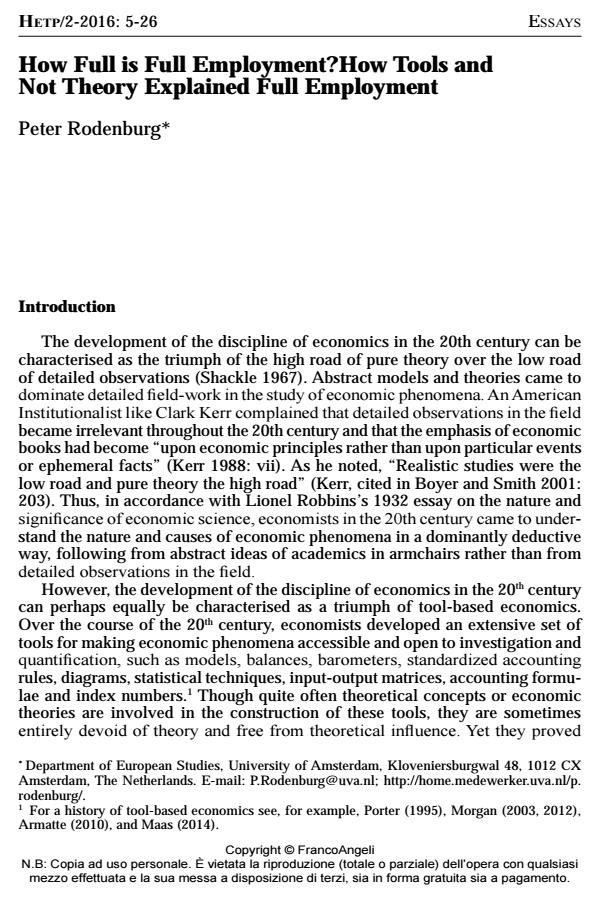How Full is Full Employment?How Tools and Not Theory Explained Full Employment
Titolo Rivista HISTORY OF ECONOMIC THOUGHT AND POLICY
Autori/Curatori Peter Rodenburg
Anno di pubblicazione 2016 Fascicolo 2016/2
Lingua Inglese Numero pagine 21 P. 5-25 Dimensione file 310 KB
DOI 10.3280/SPE2016-002001
Il DOI è il codice a barre della proprietà intellettuale: per saperne di più
clicca qui
Qui sotto puoi vedere in anteprima la prima pagina di questo articolo.
Se questo articolo ti interessa, lo puoi acquistare (e scaricare in formato pdf) seguendo le facili indicazioni per acquistare il download credit. Acquista Download Credits per scaricare questo Articolo in formato PDF

FrancoAngeli è membro della Publishers International Linking Association, Inc (PILA)associazione indipendente e non profit per facilitare (attraverso i servizi tecnologici implementati da CrossRef.org) l’accesso degli studiosi ai contenuti digitali nelle pubblicazioni professionali e scientifiche
The post-war debate on full employment policy was blurred and unclear since the concept of full employment itself was theoretically unclear and un-operational. Unable to theoretically determine the unemployment level of full employment, economists tried to find more empirically based ways to determine the level of full employment. This paper argues that economists turned the UV curve (or Beveridge curve) and Phillips curve into practical, empirical tools of investigation and measurement for full employment. In this role economists could establish quantitative facts of unemployment that were not derivable from theory alone and so fulfilled the role of a measuring instrument in economics. Consequently, they not only enhanced theory but gave specific, quantitative and empirically based interpretations of full employment that economic theory couldn’t deliver. This paper shows how the UV and Phillips curves became tools for disentangling complex and theoretically underdetermined phenomena and measurement devices for the performance of the labour market.
Parole chiave:Keynes on full employment, graphical methods, Phillips curve, tool-based economics, methodology
Jel codes:B22, B41, E24, E61, J08
Peter Rodenburg, How Full is Full Employment?How Tools and Not Theory Explained Full Employment in "HISTORY OF ECONOMIC THOUGHT AND POLICY" 2/2016, pp 5-25, DOI: 10.3280/SPE2016-002001